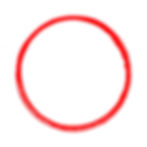HVAC Trade Math: Geometry
- SkillCat Team
- Apr 1
- 5 min read
HVAC Trade Math: Chapter 2
Geometry
In this module, we will talk about different shapes and how to find their area, perimeter, and volume. Skip to quiz!
Overview
Two-dimensional shapes are formed on a flat surface. 2D shapes have two dimensions: length and width. They have no depth.
For example, anything we draw or write on a piece of paper is two-dimensional. This is because the paper is entirely flat.
Two-dimensional shapes are all around us. Some examples of 2D shapes include square, rectangle, circle, and triangle.
3D shapes have three dimensions: length, width, and thickness. Examples of 3D shapes include cube, cone, sphere, etc.
3D shapes are everywhere. A dice is an example of a cube.An ice cream cone is an example of cone. A soccer ball is an example of a sphere.
Area
Area is the amount of space a shape takes up on a flat surface. 2D shapes have two dimensions: length and width. This is why area is calculated using squared units such as cm² and m².
To find the area of any shape, all we need is the length and the width. Let’s take a look at how we can find the area of shapes such as square, rectangle, and triangle.
Perimeter
Perimeter is the total length of all the sides of a 2D shape. To calculate the perimeter of any shape, we add up the length of each side. Let us look at how to calculate the perimeter of a square, rectangle, and triangle.
Volume
Volume is the space a three-dimensional shape takes up. 3D shapes have three dimensions: length, width, and thickness. Volume is calculated in cubic units such as cm³ and m³.
Similar to calculating area and perimeter, different equations are used to calculate the volume of different shapes. Let’s take a look at how we can find the volume of shapes such as cube, cone, and sphere.
Circles
A circle is a round shape that has no corners. The distance from the center of a circle to any point on the edge of a circle is the same. This distance is called the radius. The distance from one side of the circle to another is called the diameter.

2D shapes have length and width. A triangle, a square, a rectangle are all 2D shapes. A circle is a 2D shape with no corners.
3D shapes have length, width, and thickness. Cubes, cones, and spheres are examples of 3D shapes.
Question #1: Two dimensional objects only have length and width.
True
False
Scroll down for the answer...

Answer: True
Two-dimensional objects are flat; therefore, they have no thickness, only length and width.
Question #2: 3 dimensional objects have length, width, and thickness.
True
False
Scroll down for the answer...

Answer: True
3D shapes have three dimensions: length, width, and thickness.
Question #3: What unit is area calculated in?
Squared unit
Cubic unit
No unit
Scroll down for the answer...

Answer: Squared unit.
Two-dimensional objects are flat; therefore, they have no thickness, only width and length.
Question #4: What is the area of a square that has a length and width of 2 inches?
4 in²
5 in²
6 in²
8 in²
Scroll down for the answer...

Answer: 4 in²
Use the equation A = s x s to calculate the area of the square.
A = 2 x 2
= 4
Question #5: What is the area of a rectangle that has a length of 2 meter and a width of 3m ?
6 m
5
6 m²
2 m²
Scroll down for the answer...

Answer: 6 m²
Use the equation A = l x w to calculate the area of the rectangle.
A = 2 x 3
= 6
Question #6: What is the area of a triangle that has a height 4 feet and base of 2 feet?
8 ft²
6 ft²
4 ft²
2 ft²
Scroll down for the answer...

Answer: 4 ft²
Use the equation A = ½ (b x h) to calculate the area of the triangle.
A = ½ (4 x 2)
= ½ (8)
= 4
Question #7: What is the perimeter?
The space a shape takes up.
The total length of the shape
None of the above.
Scroll down for the answer...

Answer: The total length of the shape
Perimeter is the total length of the shape when all the sides are added up.
Question #8: Find the perimeter of a square with a length of 2 inches.
8 in
4 in
6 in
2 in
Scroll down for the answer...

Answer: 8 in
Use the formula
P = 4 x a to calculate the perimeter of a square.
P = 4 x 2
= 8
Question #9: Find the perimeter of a rectangle with a length of 2 inches and width of 3 inches.
10 in
6 in
4 in
5 in
Scroll down for the answer...

Answer: 10 in
Use the formula
P = 2 x (w + h) to calculate the perimeter of a rectangle.
P = 2 x (2 + 3)
= 2 x 5
= 10
Question #10: Find the perimeter of a triangle that has a length of 3 inches on all three sides.
9 in
6 in
3 in
4 in
Scroll down for the answer...

Answer: 9 in
Use the formula
P = a + b + c to calculate the perimeter of a triangle.
P = 3 + 3 +3
= 9
Question #11: What unit is volume calculated in.
Squared unit
Cubic unit
No unit
Scroll down for the answer...

Answer: Cubic unit
Volume is three-dimensional. In 3D, a shape has length, width, and thickness.
Question #12: Find the volume of a cube whose sides are 2 inches.
8 in³
8 in
4 in³
4 in
Scroll down for the answer...

Answer: 8 in³
Use the equation V = S³ to calculate the volume of a cube.
V = 2³
= 8
Question #13: Find the volume of a cone that has a radius of 1 and a height of 2.
2.09 in³
1.09 in
2.0 in³
3.0 in³
Scroll down for the answer...

Answer: 2.09 in³
Use the equation
V = ⅓ ( r² x h) x π.
to calculate the volume of a cone. Remember, π = 3.14
V = ⅓ (1² X 2) x π
= ⅓ (2) x π
= ⅔ x π
= 2.09
Question #14: Find the volume of a sphere with a radius of 3 inches.
113.1 in³
1.19 in
1.19 in³
2.78 in³
Scroll down for the answer...

Answer: 113.1 in³
Use the equation
V = 4/3 (π x r³)
to calculate the volume of a sphere. Remember π = 3.14.
V = 4/3 (π x 3³)
= 4/3 (27π)
= 113.1 in³
Other References: